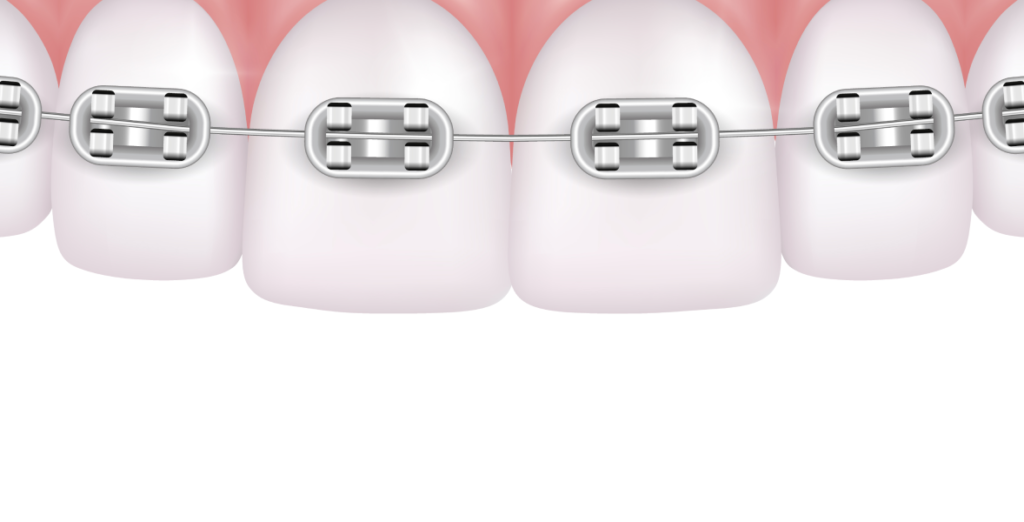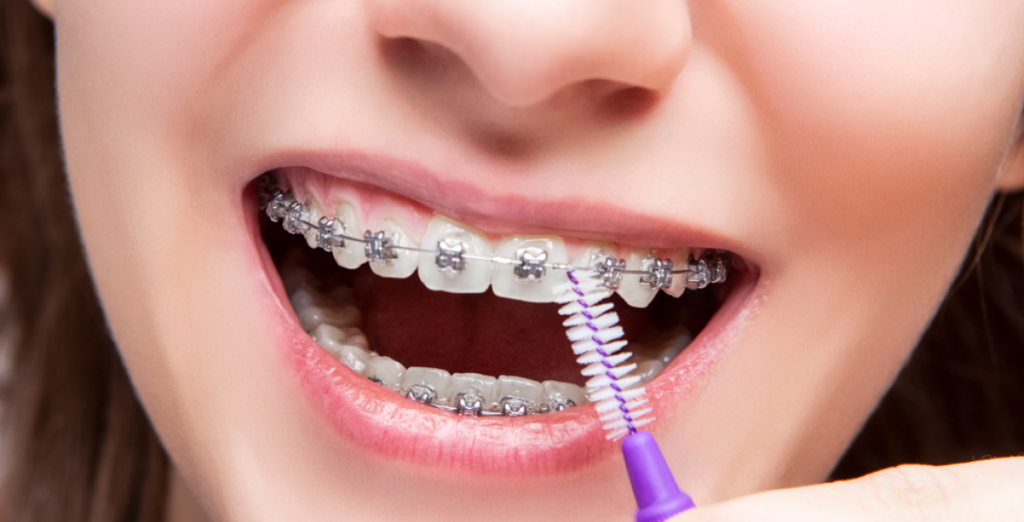This treatment is for you if…
You want to align your teeth or improve your bite, whether you are a child or an adult.
What are brackets?
Brackets are a key element in certain orthodontic devices used to align a patient’s teeth. Technically, the term «bracket» relates to each of the teeth held by a metal arch attached to the front or back surface of the tooth. They are usually made of metal, although brackets made of other materials exist, such as ceramic, sapphire glass or resin, and they are adjusted to the surface area of the teeth.
Their objective is to correct or eliminate certain defects related with the patient’s bite or the alignment of their smile, such as crowded teeth, open or crossed bite, separations between teeth (technically known as diastemas) or overbites, among others.
They have three components:
- Brackets
- Ligatures
- Metallic arch
The metallic arch is the active part of the apparatus, which really exercises the force necessary to push the teeth to the position they should occupy. The function of the brackets is simply to transfer the necessary force to the arches for them to be really effective.

Types of brackets
There are different types of brackets, according to their form, position within their teeth and their aesthetics:
Metallic brackets
These are the traditional brackets, which have been the most used over recent years thanks to their effectiveness in correcting defects and malocclusions. Although they represent the most effective orthodontic treatment, they can also be the most anti-aesthetic, since they are placed on the front of the teeth.
Aesthetic brackets
This type of orthodontics is also placed on the front part of the teeth, but they usually go unnoticed since they are made of materials such as ceramic, resin or sapphire. The material in which they are made is a more faithful imitation of the natural aspect of teeth and they are much more discreet than metallic ones.
Lingual brackets
We talk about orthodontics that are invisible to the eye, since they are placed on the inside of the teeth. They have gained prominence in recent years, thanks to their aesthetics, since they cannot be seen and therefore no one notices that the patient is wearing them.
Self-ligating brackets
Unlike conventional brackets, self-ligating brackets use a clip mechanism that holds the arch, eliminating the need for ligatures and thereby generating less friction for the teeth. They use materials similar to non self-ligating brackets and some are more discreet and aesthetic, such as ceramic or plastic brackets, which go unnoticed.
Advantages of brackets
Orthodontic treatment with any type of brackets, both in adults and children, has a series of advantages for the patient’s bite and teeth, which are basically summarised in better oral health:
- They eliminate crowding and align teeth, thereby facilitating dental hygiene. Furthermore, they prevent the accumulation of bits of food between teeth and, consequently, they reduce discomfort.
- They improve chewing, eliminating the discomfort associated with bite problems. The brackets contribute to align teeth, providing more natural chewing and thereby also improving the patient’s digestion.
- They reduce periodontal problems. On improving dental hygiene, gums tend to become less inflamed and they will stop bleeding.
- They reduce muscular injuries and mouth joints. It has been proven that badly aligned teeth cause joint pains and neck tension, which may be resolved with adequate orthodontics. Furthermore, they also avoid typical head and ear aches caused by bad teeth positioning.
- They prevent tooth decay, especially from a certain age in which the teeth begin to erode, making some teeth work harder than others. Orthodontic treatments with brackets revert the process, avoiding tooth decay in line with the patient’s age.
- They improve the patient’s smile, improving their self-esteem and enabling them to feel more secure in their social relationships.

Bracket treatment phases
Generally, the orthodontic treatment phases are similar, regardless of the type of brackets used. They are as follows:
1. Study phase. The first phase begins when the patient attends the odontological centre, where a series of problems are detected that may be corrected through the fitting of brackets. Hence, a series of diagnostic tests are performed, such as an oral x-ray and an intraoral scan. With these tests, a comprehensive diagnosis is obtained to provide a personalised treatment.
2. Active phase. In this phase, the fitting of the brackets and the arch begins. The arches will subsequently be changed in line with the needs of the treatment itself and their evolution.
3. Correction of the bite. Firstly, it is necessary to correct the bite, and to fit the molars in the correct position. Next, it is necessary to level and align the teeth.
4. Closure of dental spaces since, following the movement of the teeth, the separation between them may be somewhat greater. This phase ends when the teeth fit perfectly together.
5. Completion and personalisation. In this phase, the patient regularly visits their dentist to determine whether their teeth are in the correct position. However, each month, it may be necessary to make small adjustments to perfect teeth position, improve roots and make some small modifications.
6. Removal of brackets. This is the last phase of the treatment and it occurs only when all the previous objectives have been attained. Once they have been removed, it is important to use retainers to keep the teeth in their correct position.
Prices
The amounts indicated have been estimated in line with a full treatment, in accordance with the parameters in the table. Includes: study, treatment and check-ups during the treatment, so it serves as a guide and is of a merely informative non-contractual nature. The personalised treatment will be examined in line with the medical prescription. Prices can be increased if additional costs are incurred as a result of the requests made by each customer. Price valid until 31 December 2024 except in the event of a typing error.



